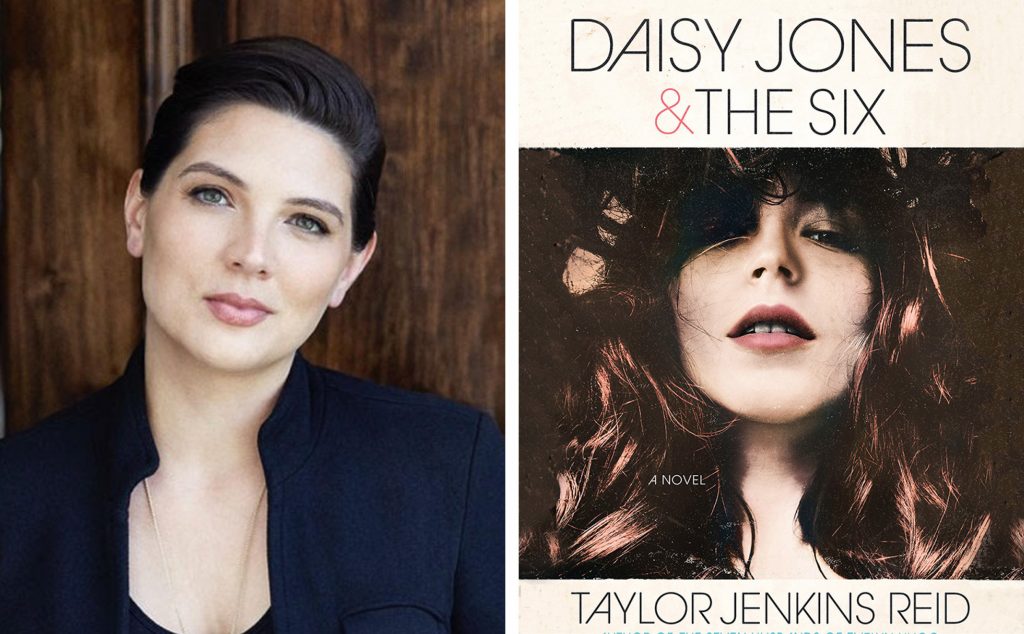“Daisy Jones and The Six” is a novel by Taylor Jenkins Reid that tells the story of a fictional 1970s rock band and their rise to fame. The book is presented in an oral history format, with various band members, friends, and associates providing different perspectives on the band’s story. Although the book is a work of fiction, many readers have been curious about the inspiration behind the story and whether it is based on a real band. In this article, we will explore the similarities and differences between “Daisy Jones and The Six” and real-life rock bands, as well as the cultural and historical context in which these stories take place.
Table of contents
The Rise of Rock ‘n’ Roll in the 1960s and 70s
Rock ‘n’ roll emerged in the United States in the 1950s as a new style of music that blended elements of rhythm and blues, country, and gospel music. The genre quickly gained popularity among young people, who were drawn to its rebellious spirit and energetic sound. By the 1960s, rock ‘n’ roll had become a global phenomenon, with bands like The Beatles, The Rolling Stones, and The Who dominating the charts and selling out stadiums around the world.
The 1970s saw the rise of a new wave of rock bands, who drew inspiration from the psychedelic sounds of the late 60s and experimented with new forms of expression. Bands like Led Zeppelin, Pink Floyd, and Black Sabbath pioneered the heavy metal and progressive rock genres, while others like Fleetwood Mac and The Eagles blended folk and country influences with rock ‘n’ roll.
Women in Rock: The Gender Dynamics of the Music Industry
Despite the growing popularity of rock ‘n’ roll, the music industry remained largely male-dominated in the 1970s. Women who wanted to break into the industry often faced sexism and discrimination, both in terms of the music they were allowed to play and the way they were treated by their male colleagues.
Some female musicians, like Janis Joplin and Grace Slick, were able to achieve mainstream success as the lead singers of bands like Big Brother and the Holding Company and Jefferson Airplane, respectively. However, they were often objectified and sexualized by the media and their male fans, and their music was frequently dismissed as “soft” or “emotional” compared to their male counterparts.
The Inspiration behind Daisy Jones and The Six
In “Daisy Jones and The Six,” Taylor Jenkins Reid creates a fictional band that draws on the sounds and styles of real 70s rock bands while also exploring the gender dynamics of the music industry.
The book tells the story of Daisy Jones, a young singer-songwriter with a troubled past, who is discovered by the members of a rising rock band called The Six. As Daisy and The Six collaborate on an album, their personal and professional lives become entangled, leading to conflicts and rivalries that threaten to tear the band apart.
While “Daisy Jones and The Six” is a work of fiction, Jenkins Reid has said that she was inspired by the music and culture of the 1970s, as well as her own experiences as a woman working in the entertainment industry. In an interview with The New York Times, she described the book as “a love letter to rock ‘n’ roll,” and said that she wanted to capture the excitement and energy of the era while also exploring the human stories behind the music.
The Real-Life Counterparts of Daisy Jones and The Six
Although “Daisy Jones and The Six” is a fictional story, readers and critics alike have drawn comparisons between the book and real-life rock bands from the 1970s. Some have speculated that the band’s sound and style are reminiscent of Fleetwood Mac, who experienced their own share of personal and professional drama during the making of their landmark album “Rumours.” Others have noted similarities between Daisy Jones and iconic female rockers like Stevie Nicks and Janis Joplin, who both struggled with addiction and personal demons throughout their careers.
While Jenkins Reid has acknowledged that she drew inspiration from the music and culture of the 1970s, she has also emphasized that “Daisy Jones and The Six” is a work of fiction and not meant to be a direct retelling of any particular band or artist’s story. However, the book’s popularity has sparked renewed interest in the music and culture of the era, and has led many readers to explore the real-life stories behind their favorite rock bands.
The Legacy of 70s Rock and Roll
The 1970s was a transformative decade for rock ‘n’ roll, as the genre continued to evolve and expand in new directions. From the heavy metal of Black Sabbath to the folk rock of Joni Mitchell, the era produced some of the most iconic and influential music of all time. However, the 70s was also a time of social and political upheaval, as the United States grappled with issues like civil rights, the Vietnam War, and the feminist movement.
As a result, the music of the 1970s was often deeply intertwined with the cultural and political issues of the day. Songs like “War” by Edwin Starr and “Ohio” by Crosby, Stills, Nash, and Young addressed the human cost of war and the need for social change, while albums like “Rumours” by Fleetwood Mac and “Exile on Main St.” by The Rolling Stones explored the complexities of human relationships and emotions.
Today, the music of the 1970s continues to resonate with listeners of all ages, and remains a source of inspiration for new generations of musicians and artists. Whether through fictional accounts like “Daisy Jones and The Six” or through real-life stories and documentaries, the music and culture of the 70s continues to capture the imagination and ignite the passion of fans around the world.



 For all latest articles, follow on Google News
For all latest articles, follow on Google News